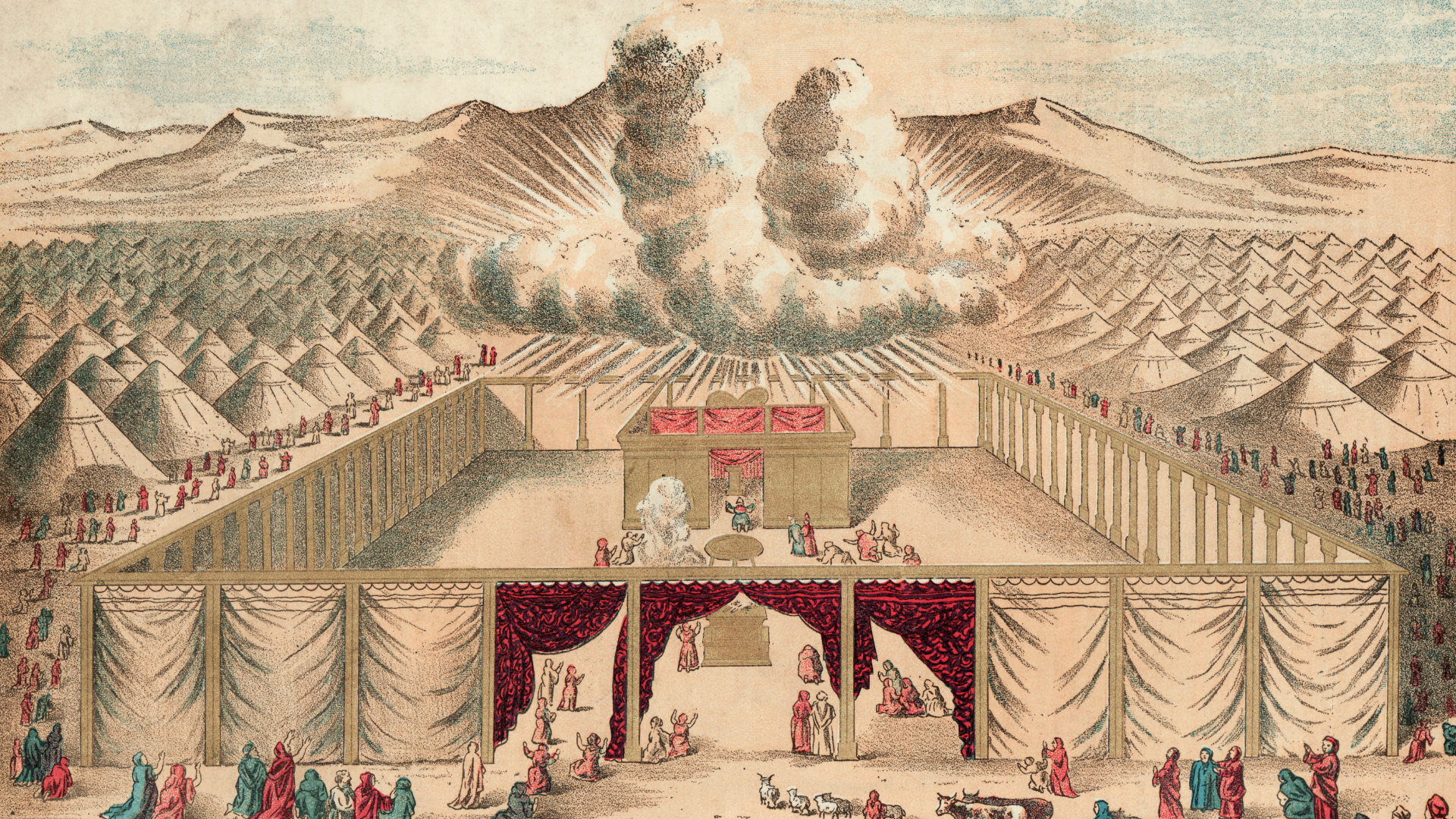The Lord God created the first couple, Adam and Eve, to know fellowship and communion with him in the garden of Eden. Tragically, the Serpent deceived Eve, and Adam willfully ate fruit from “the tree of the knowledge of good and evil,” transgressing the one divine commandment God gave him (Gen. 2:17; 3:1–7).
As a result, the Lord God “drove out the man, and at the east of the garden of Eden he placed the cherubim and a flaming sword that turned every way to guard the way to the tree of life” (3:24; emphasis added). Humanity, being separated from God, who is the fountain of living waters, now entered a realm of death. Genesis’s narrative never loses sight of this eastward movement, away from the glory of God. We read, for example, that Cain, after slaying his brother Abel, “settled in the land of Nod, east of Eden” (4:16; emphasis added).
These Eden stories likely informed Israel’s liturgy, especially the ceremony given in Leviticus 16. On Israel’s holiest day of the year, the Day of Atonement, the movement away from God’s presence was reversed through the path of the high priest, who functioned as an Adam figure. How can we grasp the high priest’s entrance into the Holy of Holies, once a year on the Day of Atonement, as a liturgical drama?
Tabernacle and the Garden
We’ll appreciate the beautiful theology of the Day of Atonement more deeply by first understanding how the tabernacle symbolized Eden.
Scholars have long recognized a host of parallels between Eden and Israel’s tabernacle (and later temple), along with the portrayal of Adam as a priest-king. Both the garden and the tabernacle were oriented toward the east (see Ex. 26:18–22; 27:9–18; Ezek. 40:6; 47:1). Moreover, Adam’s service in the garden is described with two verbs (to “work” and “watch over,” Gen. 2:15, CSB) used later in the Pentateuch to describe the service of Levites as they ministered in the tabernacle (Num. 3:7–8; 8:26; 18:5–6).
The rich arboreal decor of the tabernacle recalls Eden’s lushness, including the menorah that, as a stylized tree, represents the tree of life. And the cherubim stationed by the Lord at the garden’s entry show up again in the Pentateuch: this time in the tabernacle, woven onto the veil guarding entry to the holiest place.
The rich arboreal decor of the tabernacle recalls Eden’s lushness.
In the ancient world, fierce, composite creatures guarding an eastward-oriented gateway signaled a temple—Genesis, therefore, portrays Eden as an archetypal temple, a sanctuary. Stated from the other direction, Israel’s tabernacle and later temple were designed to recapture life with God portrayed in Eden. Moreover, even as Adam can be read as an archetypal priest, we can also understand the high priest’s role as functioning as an Adam figure.
Restoration as a Westward Journey to God’s Presence
We can see how the tabernacle, as something of an architectural Eden, offered Israel a restoration of God’s paradisiacal presence. The tabernacle, however, wasn’t only the earthly house of God but the way to God’s presence, through the sacrificial system, including the priesthood and its ordained rituals.
This is certainly the case with the Day of Atonement, when the narrative of humanity’s eastward expulsion from the garden was reversed liturgically. On this high and holy day, Aaron the high priest, as a cultic Adam, journeyed westward into the tent of meeting and through the cherubim-woven veil, into the earthly throne room of God within the Holy of Holies.
But how, we must ask, could humanity’s expulsion be reversed? Only through the blood of a blameless substitute, sacrificed for the sins and defilement of God’s people. The high priest entered the archetypal Eden only with blood of atonement, to sprinkle that blood on the atonement-lid of the ark of the covenant, renewing the relationship between the Lord and his people. Indeed, “at-one-ment” refers to reconciliation, to the union and communion with God reestablished by the divinely ordained sacrificial ritual revealed to Israel through Moses.
Cleansing the Cosmos
It wouldn’t be an exaggeration to claim that Adam’s expulsion from the garden is the central tragedy that drives the Bible’s storyline. The tabernacle, as an architectural Eden, wasn’t God’s ultimate plan to restore his people to himself. The cosmos, as God’s original “house,” was intended as the theater for God’s relationship with human beings.
Aaron the high priest, as a cultic Adam, journeyed westward into the tent of meeting and through the cherubim-woven veil, into the earthly throne room of God.
When that cosmic house became defiled by sin and death, the Lord God, who is absolute life, holiness, and purity, could no longer dwell with his people on earth—that’s the whole point of the tabernacle. As a mini-cosmos, the tabernacle enabled God to live among his people. But what happens when that mini-cosmos becomes defiled by sin and death? The remedy was the Day of Atonement ceremony, as the blood of sacrifice cleansed both God’s house and his people.
The question naturally surfaces: If there’s a Day of Atonement ceremony to cleanse the microcosm and copy, can there be such a ceremony to cleanse God’s original house, the cosmos? The author of Hebrews answers yes, but this requires another priesthood and sacrifice, and another Adam—the Lord Jesus Christ, who has entered into the heavenly Holy of Holies, into the true presence of God for us (Heb. 9:24).
Because of the beloved Son’s sacrifice and heavenly exaltation, the Bible story—and your story—can end with a restored Eden in a new heavens and earth, and with living waters flowing from the throne of God and of the Lamb (Rev. 22:1–5).
To learn more from Michael Morales, register for his upcoming TGC cohort Genesis: God’s Mission in the World Fridays, March 7–April 11 from 3–4:30 p.m. ET. Hurry! Registration ends on February 27 at midnight.
Join The Carson Center mailing list
The Carson Center for Theological Renewal seeks to bring about spiritual renewal around the world by providing excellent theological resources for the whole church—for anyone called to teach and anyone who wants to study the Bible. The Center helps Bible study leaders and small-group facilitators teach God’s Word, so they can answer tough questions on the spot with a quick search on their smartphone.
Click the button below to sign up for updates and announcements from The Carson Center.
Join the mailing list »







